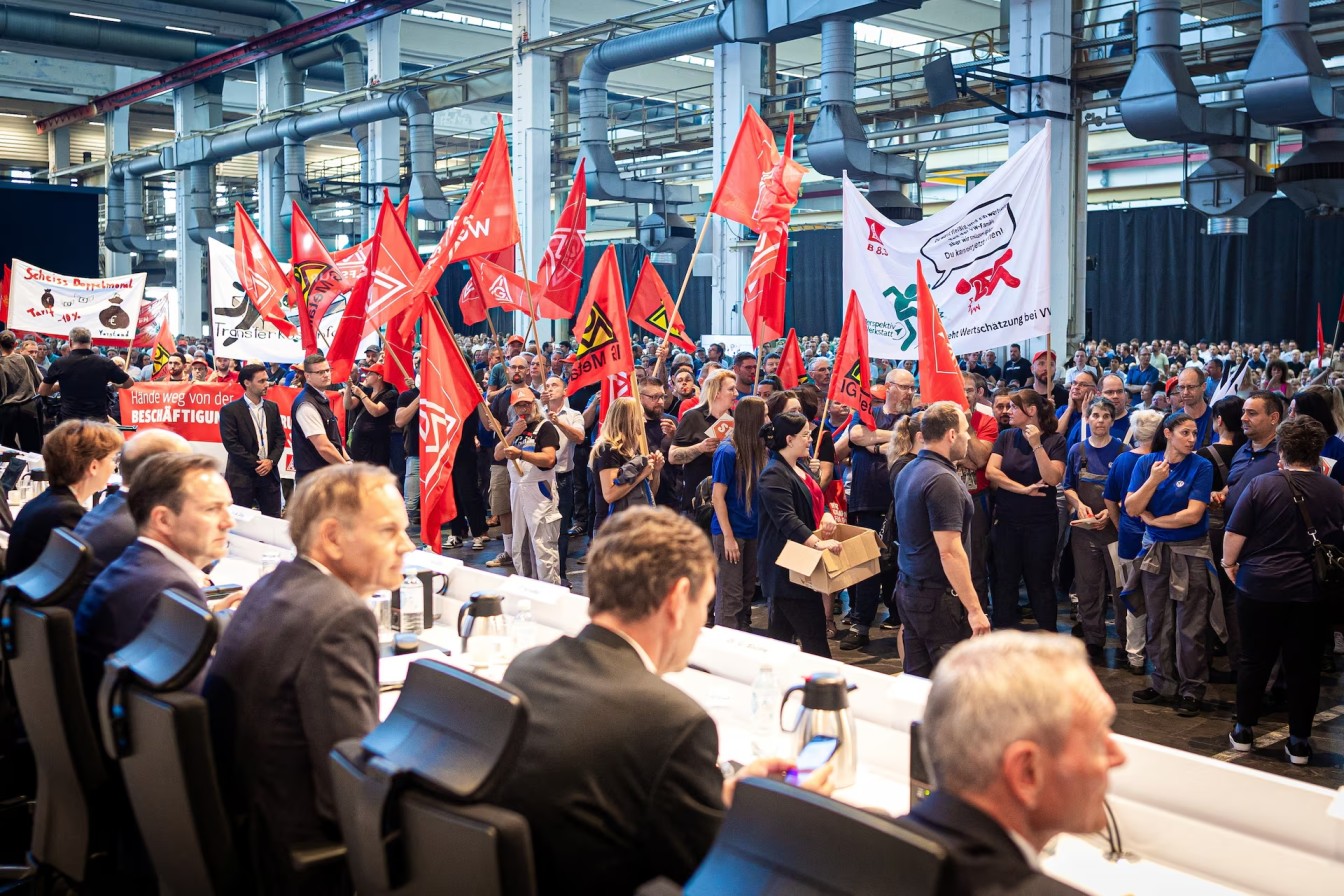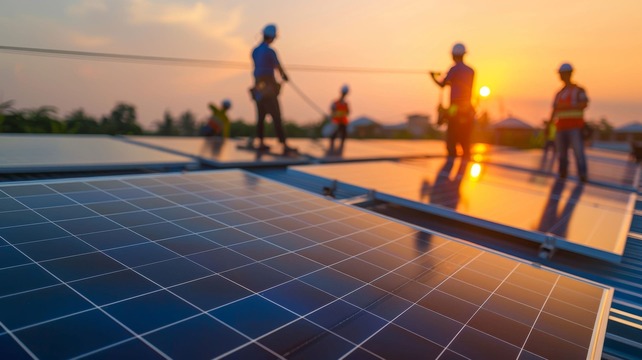More Updates
Website Updates

New Worksheet Available: Financial Analysis Essentials!
- Details
We’re excited to share our latest worksheet designed to enhance your understanding of financial performance assessment. Dive into the concepts of profitability ratios, gearing ratios, and the role of financial statements like the profit and loss account. Whether you're looking to sharpen your skills or grasp key financial concepts, this worksheet provides a comprehensive exploration of how these metrics influence business decisions and stakeholder perspectives.
🔍 Key Highlights:
- Definition and importance of stakeholders
- Purpose and impact of the profit and loss account
- Risks associated with high gearing ratios
- In-depth discussion on profitability ratios, including ROCE and profit margin
Perfect for IGCSE and A Level students and anyone interested in business finance. Access the worksheet now and take the next step in mastering financial analysis!
📥 Download Here: Click to Download
#FinancialAnalysis #BusinessStudies #IGCSE #ProfitabilityRatios #GearingRatios

New Worksheet - Understanding Trade Unions in Business Strategy
- Details
We’re excited to announce the release of our latest educational resource, a comprehensive worksheet designed to help Business Studies students delve into the critical role of trade unions in shaping business strategies. This worksheet is perfect for both IGCSE students, who can benefit from straightforward, fundamental questions, and A-Level and IBDP students, who will engage with more complex, discussion-based questions.
What’s Inside?
- Two Sets of Questions: Tailored for different levels, with simpler questions for IGCSE students and more challenging questions for those studying A-Level and IBDP.
- Focus on Real-World Application: The questions are based on a recent case involving Volkswagen, providing students with practical insights into how trade unions interact with management during challenging times.
- Skill Development: This worksheet is designed to enhance students' understanding of trade unions, their objectives, and their impact on business decisions, while also fostering critical thinking and discussion skills.
Whether you’re an educator looking for new classroom materials or a student aiming to deepen your understanding of business dynamics, this worksheet is a valuable tool. Dive in and explore how trade unions influence business strategies in today’s complex economic environment!

New Worksheet Released: Currency Fluctuations and Monetary Policies
- Details
We’re excited to announce the release of our latest worksheet, designed to help you delve into the complexities of currency fluctuations and the impact of global monetary policies.
This worksheet provides a detailed examination of the recent movements in the U.S. dollar, particularly against the yen, and explores how central bank decisions—like interest rate cuts—can influence global financial markets. Through a series of exam-style questions, you'll gain a deeper understanding of how these factors interact and shape the global economy.
Whether you’re studying for IGCSE or A Level / IBDP Economics or just looking to enhance your knowledge of economics, this worksheet is a valuable resource. Download it now and start mastering the intricacies of currency markets and monetary policy!

Unraveling the Economics of Soaring Agricultural Prices
- Details
Are you intrigued by the recent surge in coffee, durian, cocoa, and pepper prices? Want to understand the economic forces driving these changes? Look no further!
We've created a comprehensive worksheet designed to help IGCSE, A-Level, and IBDP Economics students grasp the complexities of supply and demand in the agricultural market. Explore concepts like exports, price elasticity, and market equilibrium as you analyze the impact of shrinking cultivation areas and rising prices on economies worldwide.
Ready to dive in? Download the worksheet
Share your insights and discuss the implications of these price fluctuations with fellow economics enthusiasts in the comments below!

New Exam Style Question Worksheet on Free Trade
- Details
India and the UK: A New Chapter in Trade
Perfect for IGCSE, A-Level, and IBDP Economics students!
Our new worksheet delves into the economic implications of the upcoming India-UK trade talks. Explore the concept of free trade, its impact on consumers and markets, and the potential benefits and challenges for developing countries.
Ideal for classroom revision or independent study.
- Understand the basics of free trade
- Analyze supply and demand in relation to tariffs
- Evaluate the impact of trade liberalization on developing countries
Grab your copy now and enhance your economics knowledge!
#India #UK #trade #freeTrade #economics #worksheet #dineshbakshi #IGCSE #ALevel #IBDP #education

New Resource Available: 'Ethics in Business' Exam Style Questions
- Details
We are pleased to announce the release of a new set of exam-style questions focused on 'Ethics in Business.' These questions are designed to help students engage with real-world ethical challenges that businesses face and to evaluate their potential responses and impacts.
Key Focus Areas:
- Ethical Issues in Business: Explore conflicts between profit motives and ethical practices, using the recent investigation into Armani and Dior as a case study.
- Corporate Social Responsibility: Understand how businesses can respond to ethical issues such as worker exploitation and the measures they can take to ensure fair labor practices.
- Business Reputation and Ethics: Analyze how ethical practices (or the lack thereof) can impact a business's reputation and operational success.
Why This Resource is Important:
- Real-World Relevance: The questions are based on a contemporary news article, making the scenarios highly relevant to current business ethics discussions.
- Critical Analysis: Encourages students to think critically about the balance between profitability and ethical behavior in business.
- Preparation for Exams: Provides a practical resource for exam preparation, helping students to frame their answers effectively and think through complex ethical dilemmas.
We believe this new resource will be invaluable for students aiming to deepen their understanding of business ethics and for educators looking to enrich their teaching materials with current, real-world examples.
Click here to view the worksheet
Stay tuned for more updates and resources to support your learning journey!

Breaking Down The Expenses: How Much Do Commercial Solar Panels Cost?
- Details
In recent years, the adoption of renewable energy sources has significantly increased across various sectors. For instance, commercial enterprises have grown interested in solar energy as a sustainable and cost-effective alternative. This interest is driven by both environmental concerns and the potential for long-term savings on energy costs.
Understanding the financial implications of installing commercial solar panels is also crucial for businesses considering this investment. But how much do commercial solar panels cost?
Read on to learn more.
Long-Term Benefits For Businesses
Adopting solar technology offers numerous long-term benefits for businesses beyond immediate financial savings. First, it can significantly reduce a company’s carbon footprint, an increasingly important factor for businesses committed to sustainability. This can enhance a company’s public image and appeal to a growing demographic of environmentally conscious consumers.
Moreover, solar energy contributes to energy independence, reducing reliance on local utility providers and protecting against fluctuating energy prices. Another strategic advantage is the potential increase in property values, as buildings with solar installations often attract more interest and command higher prices.
Lastly, business owners interested in leveraging these benefits can learn the benefits of solar panels for businesses to better understand how solar energy can positively impact their operations and public perception.
Initial Investment In Commercial Solar Panels
The upfront cost of commercial solar panels is one of the most significant factors for any business to consider. These costs are primarily influenced by the size of the system required, the quality of the panels, and the complexity of the installation. For a standard commercial installation, expenses can range from approximately USD$50,000 to over USD$1 million, depending on the system’s capacity.
Furthermore, these initial costs include the solar panels themselves, inverters, mounting systems, wiring, and labor. While more expensive, high-efficiency panels can generate more electricity and thus offer greater long-term savings. Lastly, businesses must account for potential structural reinforcements to their premises, which can add to the initial investment.
Ongoing Costs And Maintenance
After installing commercial solar panels, ongoing expenses are much lower than those associated with conventional power sources. The primary ongoing costs include regular system performance monitoring and periodic maintenance such as cleaning and inspections to ensure everything operates efficiently. Typically, the largest expense might be the replacement of inverters, which are essential for converting solar energy into usable electricity and tend to have a lifespan of 10 to 15 years.
Additionally, while solar panels have a long lifespan of up to 30 years, their efficiency can degrade slightly over time—usually by about 0.5% to 1% per year. Even with these reductions in efficiency, the overall maintenance and operational costs of solar panels are minimal compared to the rising costs of non-renewable energy sources, securing solar energy as a cost-effective solution for the long term.

Tax Incentives And Rebates
Governments at various levels offer a range of incentives to promote the adoption of solar energy by businesses. These financial incentives include tax credits, rebates, and grants, which can significantly lower the initial and ongoing costs of a solar setup. For example, the federal solar investment tax credit (ITC) is particularly notable, allowing businesses to deduct 26% of the cost of installing a solar energy system from their federal taxes.
Furthermore, many states and localities offer incentives, such as additional tax rebates or grants, to reduce costs further. These incentives can vary widely by location and are subject to change, so businesses must stay informed of the latest opportunities. By taking advantage of these financial incentives, enterprises can dramatically decrease the net cost of their solar energy systems, making solar investments even more financially appealing.
Financing Options For Solar Energy
The high initial solar panel installation costs can be a barrier for many businesses. To address this, the market offers various financing models that make solar energy accessible without substantial upfront investment. Loans are a straightforward option, providing enterprises with the capital to purchase and own the system, typically benefiting from tax credits and depreciation. Leasing is another popular choice, where businesses pay a monthly fee to use the solar system without owning it, which often includes maintenance and repairs.
Additionally, power purchase agreements (PPAs) are advantageous for companies that wish to avoid initial expenses and maintenance responsibilities. Under a PPA, a third party owns the solar system, and the business only pays for the electricity produced, often at rates lower than utility prices, providing immediate savings with no capital investment.
Calculating The Break-Even Point
Determining when a solar investment will start to pay off, or reach its break-even point, is crucial for business planning. This point is influenced by several factors including the upfront cost, financing terms, and ongoing electricity costs from the grid. Furthermore, geographical location plays a significant role, as it affects how much sunlight the panels will receive and how much electricity they’ll generate. Most commercial solar installations are designed to break even within 5 to 10 years.
After reaching the break-even point, the system will continue to produce energy, resulting in substantial cost savings over time. By understanding these dynamics, businesses can make informed decisions about solar investments and manage expectations regarding financial returns.
Future Trends In Solar Energy Costs
The cost of solar technology has consistently fallen over the past decade due to technological advancements and increased production scales, making it more competitive against traditional energy sources. This trend is expected to persist as innovations continue to improve efficiency and lower costs.
Also, evolving regulatory environments are likely to introduce new incentives aimed at promoting renewable energy adoption, potentially reducing costs further. As solar technology becomes more mainstream, its integration into the commercial sector is expected to increase, driving demand and competition in the market. This shift promises to make solar energy more accessible to a broader range of businesses and contributes to the global transition towards more sustainable energy solutions.
Final Thoughts
Investing in commercial solar panels involves considerable upfront costs, but the long-term savings, combined with the environmental benefits, make it a worthwhile investment for many businesses. By understanding all associated costs, incentives, and financing options, companies can make informed decisions that align with their financial and environmental goals.
As solar technology costs continue to decrease, more businesses are likely to adopt this sustainable energy solution, contributing to a greener and more energy-efficient future.

New Worksheet Announcement: Airbus in India
- Details
We are excited to announce the release of a new educational worksheet focusing on the strategic decisions and economic impacts of Airbus setting up a final assembly line (FAL) for H125 helicopters in India. This worksheet is designed to provide in-depth insights into various aspects of multinational business operations and their effects on local economies.
Key Topics Covered:
- Strategic Benefits to Airbus: Explore the strategic advantages Airbus gains by establishing its FAL in India, such as market expansion and cost efficiencies.
- Impact on Foreign Exchange Rates: Evaluate how Airbus's "Make in India" initiative influences the foreign exchange rate of the Indian Rupee, considering factors like investment inflows and currency stability.
- Economic Implications for India: Discuss the potential benefits and drawbacks for the Indian economy, including job creation, technology transfer, and effects on local businesses.
Why This Worksheet is Valuable:
- Real-World Application: Provides a practical case study for understanding multinational company operations and economic impacts.
- Critical Thinking: Encourages students to analyze and evaluate the broader implications of business decisions.
- Current and Relevant: Based on a contemporary scenario, making it highly relevant to current economic and business studies.
We believe this worksheet will be a valuable resource for students and educators alike, providing a comprehensive look at the intricacies of global business strategy and economic development.
Stay tuned for more educational resources and updates!
Click here to view the worksheet

New Worksheet on Currency Movements
- Details
Introducing Our Latest Resource: Exam-Style Questions on Currency Movements and Economic Indicators!
We are excited to announce the release of a new worksheet tailored for Cambridge Economics A Level students. This worksheet, available on DineshBakshi.com, focuses on the complexities of currency movements and the impact of various economic indicators.
Key Topics:
- Impact of crude oil prices on currency
- Role of foreign institutional investors
- Relationship between equity markets and currency value
- Central bank interventions for currency stability
- Influence of global economic indicators on forex markets
Why You Need This Worksheet:
This resource is essential for any student looking to excel in their A Level Economics and IBDP Economics exams. By working through real-world scenarios and exam-style questions, you will be better prepared to tackle challenging topics and enhance your understanding of the global economic landscape.
Download Now:
Click here to download the worksheet and start mastering the intricacies of currency movements and economic indicators today!
New Worksheet on Euro Area Inflation Now Available!
- Details
We are thrilled to introduce a brand-new worksheet designed to provide an in-depth analysis of the June 2024 inflation dynamics within the euro area. This resource is perfect for Cambridge Economics A Level students eager to deepen their understanding of macroeconomic trends and inflationary pressures.
What's Inside:
In this worksheet, you will explore key concepts such as headline and core inflation, the impact of energy prices, and the stability of services inflation. By analyzing real-world data, you will gain insights into the challenges faced by the European Central Bank (ECB) and the potential effects of interest rate changes on the euro area economy.
Our carefully crafted exam-style questions will help you apply economic theories to current events, enhancing your analytical skills and preparing you for your exams. This worksheet is an essential tool for any student looking to deepen their knowledge of macroeconomic trends and their impact on the global economy.
Click here to download the worksheet
Analyze the June 2024 U.S. Job Market
- Details
We are thrilled to announce the release of a brand-new worksheet designed to provide an in-depth analysis of the June 2024 U.S. job market. This resource is perfect for Cambridge Economics A Level and IBDP students looking to deepen their understanding of labor market dynamics and economic trends.
What's Inside:
Our new worksheet is based on the latest employment data and covers a range of topics that are crucial for any aspiring economist. The worksheet includes detailed analysis and exam-style questions that will help you apply your knowledge to real-world scenarios.
Key Features:
- In-Depth Analysis: Gain insights into the factors influencing the U.S. job market in June 2024, including unemployment rates, wage growth, and sector-specific job changes.
- Exam-Style Questions: Practice with five exam style questions, complete with allocated marks, to enhance your exam readiness.
- Real-World Application: Apply economic theories and concepts to current events, fostering critical thinking and analytical skills.
- Marking Scheme: Understand what examiners look for with our detailed marking scheme.
Download Now:
Click here to head over to the Worksheet section to download the worksheet !
More Articles …
Page 1 of 2
JOIN OUR ONLINE COURSES
Exciting News!
New Youtube Channel - ThinkIGCSE
Hi Everyone, I have launched a new YouTube channel with more than a 100 videos on Economics and Business Studies, tailored specifically for IGCSE and A Level and IBDP students.
Subscribe now and join us on this learning journey: @thinkIGCSE




